Venomous snakes are some of the most dangerous creatures on the planet, and their venom can cause severe reactions in their victims, from immobilization and hemorrhage to tissue death and inflammation.
Scientists measure how venomous a snake is by using a toxicology test called the median lethal dose, also known as LD50. By applying this scale, we can determine what the most venomous snakes in the world are.
You are reading: The Top 10 Most Venomous Snakes In The World
The ranking of the most venomous snakes can vary depending on the source and the criteria used to determine venom toxicity. In this article, we will explore the top 10 most venomous snakes in the world according to various sources.
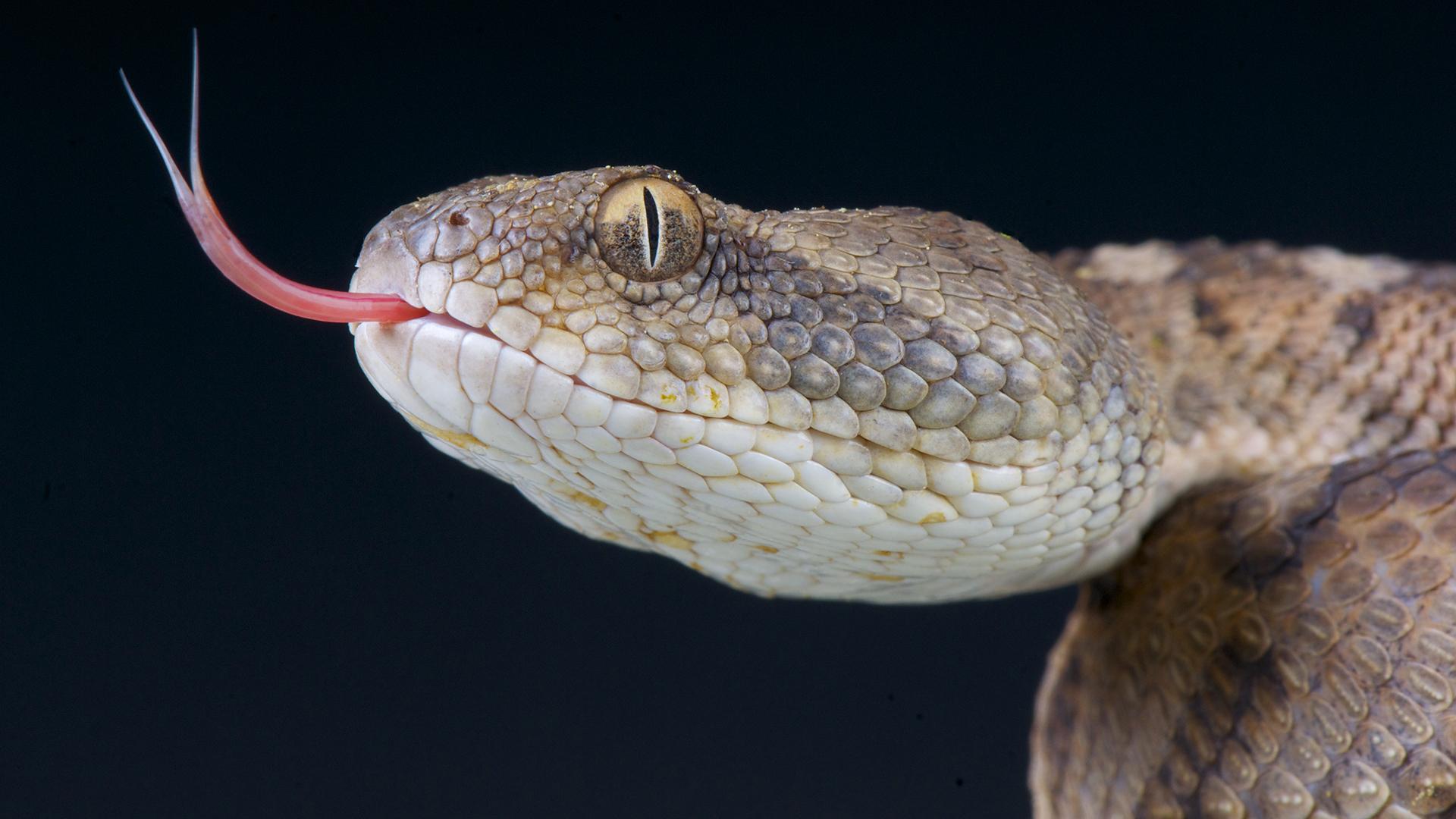
The Top 10 Most Venomous Snakes In The World
Saw-scaled viper (Echis carinatus)
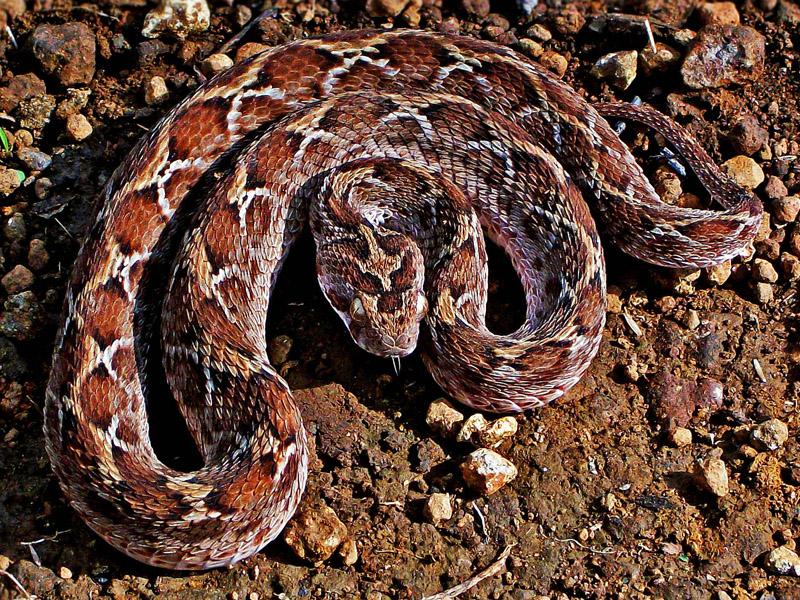
The saw-scaled viper (Echis carinatus) is a venomous viper species found in parts of the Middle East and Central Asia, and especially the Indian subcontinent. It is the smallest member of the “big four” Indian snakes that are responsible for causing the most snakebite cases and deaths, due to various factors including their frequent occurrence in highly populated regions, and their inconspicuous nature.
Two subspecies are currently recognized, including the nominate subspecies described here. The size of E. carinatus ranges between 38 and 80 cm (15 and 31 in) in total length (body + tail), but usually no more than 60 cm (24 in) .
Saw-scaled vipers are characterized by a stout body with a pear-shaped head that is distinct from the neck, vertically elliptical pupils, rough and strongly keeled scales, and a short thin tail. They are nocturnal, coming out at twilight to hunt for food, which includes mammals, birds, snakes, lizards, amphibians, and invertebrates such as scorpions and centipedes.
Saw-scaled vipers are small, but their irritability, aggressive nature, and potent venom make them one of the most dangerous snakes in the world.
Inland taipan (Oxyuranus microlepidotus)
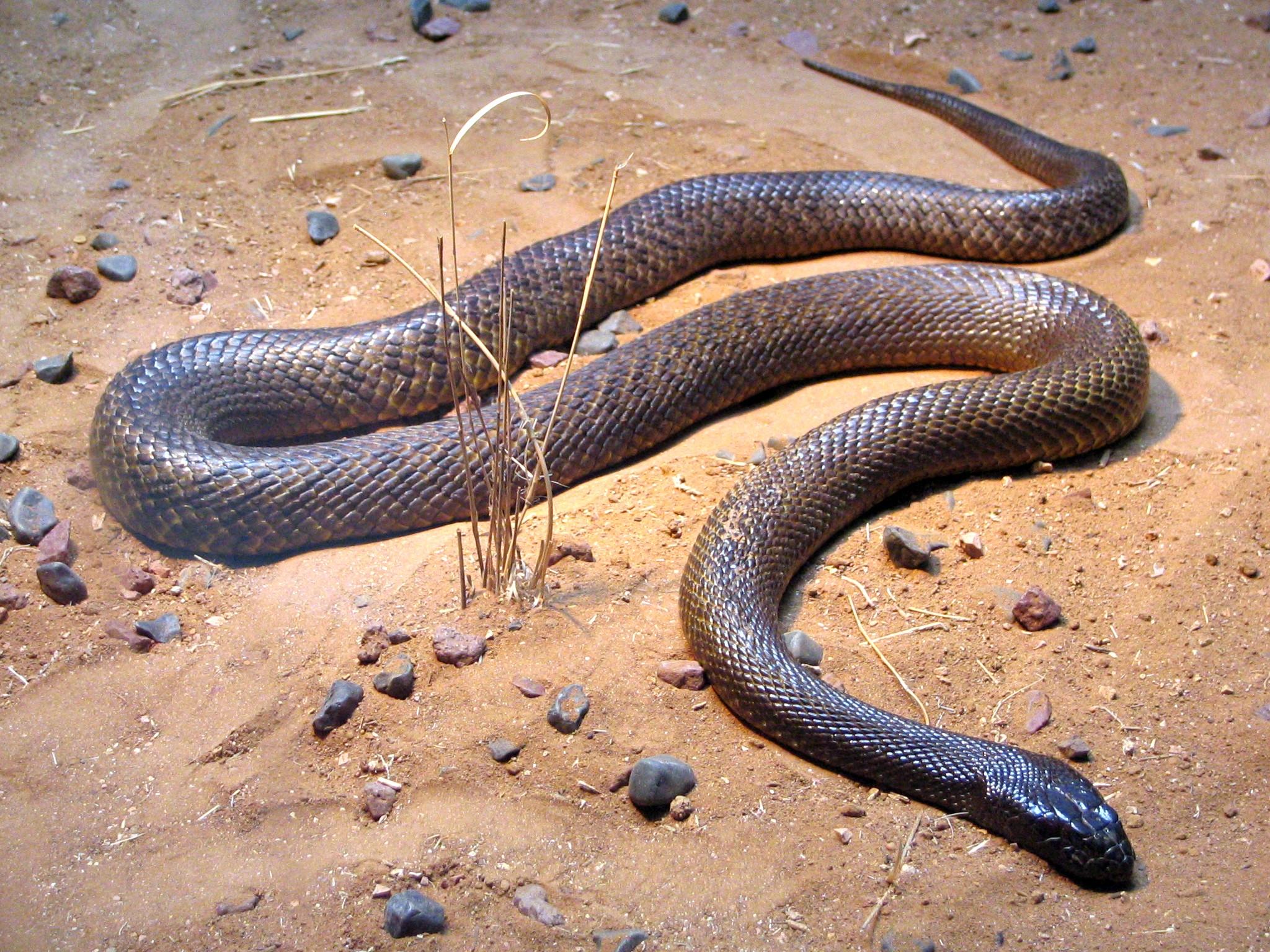
The inland taipan (Oxyuranus microlepidotus) is the most venomous snake in the world, according to various sources. It is also known as the western taipan, small-scaled snake, or fierce snake.
The species is endemic to semiarid regions of central east Australia, including the far west and southwest of Queensland, the far west of New South Wales, and the northeast corner of South Australia.
Inland taipans are associated with deep cracking-clays and cracking-loams of the floodplains, but they also venture onto nearby gibber plains, dunes, and rocky outcrops if cover is available.
The vegetation in these areas is usually sparse, consisting of chenopod shrubs, lignum, and the occasional eucalypt near the water channels. The snakes shelter in soil cracks and crevices, and in holes and mammal burrows. The inland taipan is a solitary and elusive snake that is rarely encountered in the wild by humans.
Black mamba (Dendroaspis polylepis)
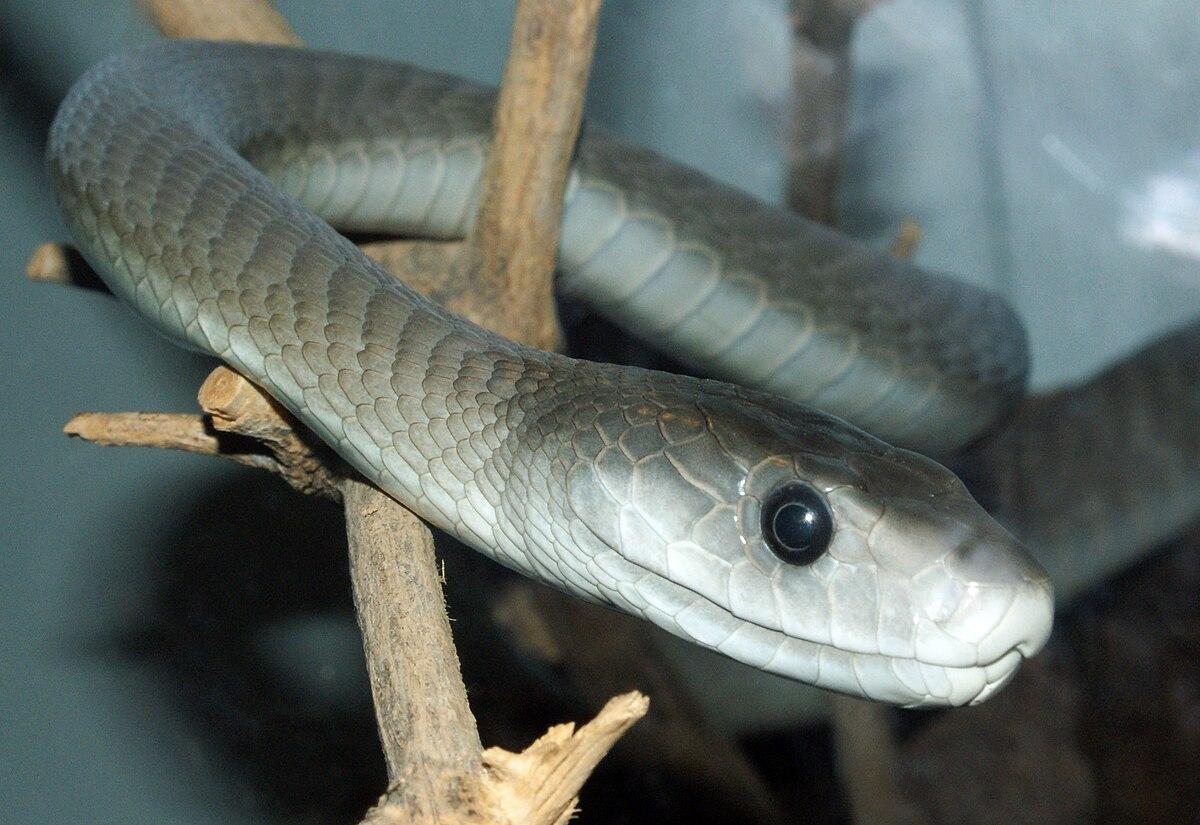
The black mamba (Dendroaspis polylepis) is a highly venomous snake species that belongs to the family Elapidae. It is native to parts of sub-Saharan Africa, including southern and eastern regions.
The black mamba is the second-longest venomous snake after the king cobra, with mature specimens generally exceeding 2 m (6 ft 7 in) and commonly growing to 3 m (9.8 ft). Specimens of 4.3 to 4.5 m (14 to 15 ft) have been reported. The skin color of black mambas varies from grey to dark brown, and the scales of some individuals may have a purplish sheen.
Contrary to their common name, black mambas are not actually black, and can be olive, brownish, gray, or sometimes khaki in color. Black mambas are fast, nervous, and highly aggressive when threatened. They are also among the fastest snakes in the world, slithering at speeds of up to 12.5 miles per hour.
Black mambas have been blamed for numerous human deaths, and African myths exaggerate their capabilities to legendary proportions. They are carnivorous, feeding on small mammals, birds, and occasionally other snakes.
King cobra (Ophiophagus hannah)
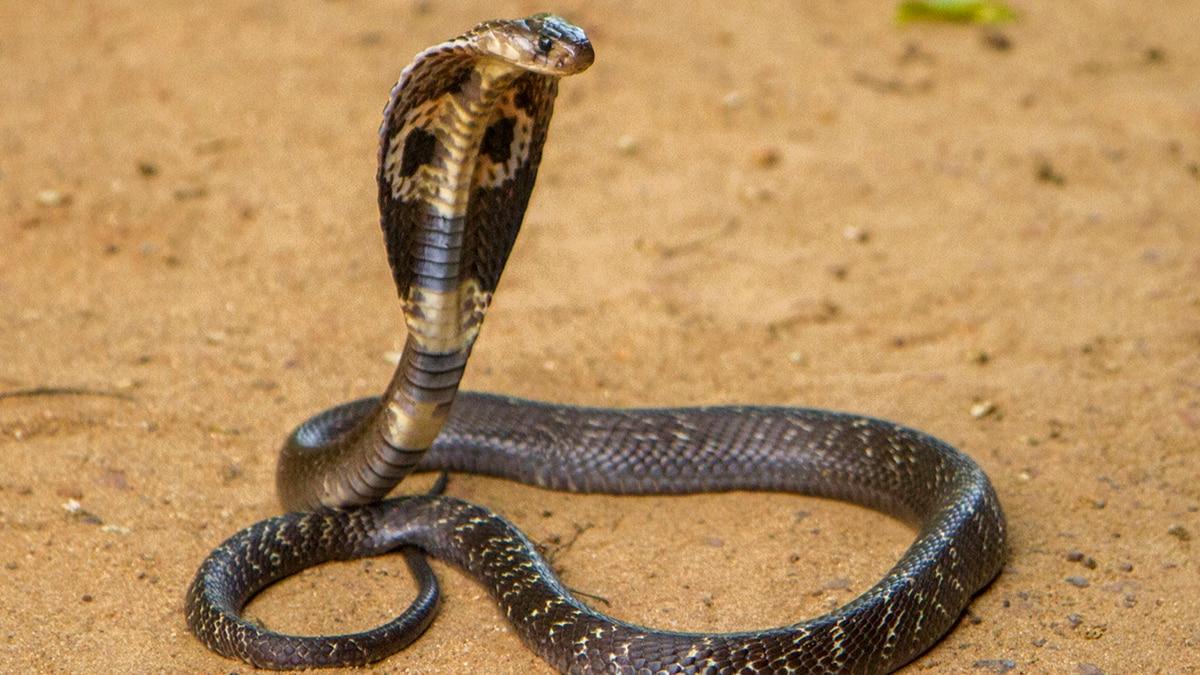
The king cobra (Ophiophagus hannah) is a venomous snake species that belongs to the family Elapidae. It is the world’s longest venomous snake, with an average length of 3.18 to 4 m (10.4 to 13.1 ft) and a maximum record of 5.85 m (19.2 ft).
The king cobra is native to forests from India through Southeast Asia. Despite its common name, the king cobra is not a true cobra, and it is the sole member of its own genus, Ophiophagus.
The skin color of king cobras varies across habitats, from black with white stripes to unbroken brownish grey. The juveniles are jet-black, with yellow or white cross-bars on the body and tail and four similar cross-bars on the head.
King cobras are oviparous and lay 21-40 eggs. The female pushes leaves and branches into a nest pile where the eggs are incubated by the elevated temperatures of decomposition. The female remains on top of the nest to guard the eggs, and the male also remains close by.
Read more : Learn About All Of The Major Deer Species
King cobras are regarded as fierce and aggressive snakes, and their length and size give them an awesome appearance. They feed mainly on other snakes, particularly rat snakes, and sometimes lizards.
Russell’s viper (Daboia russelii)
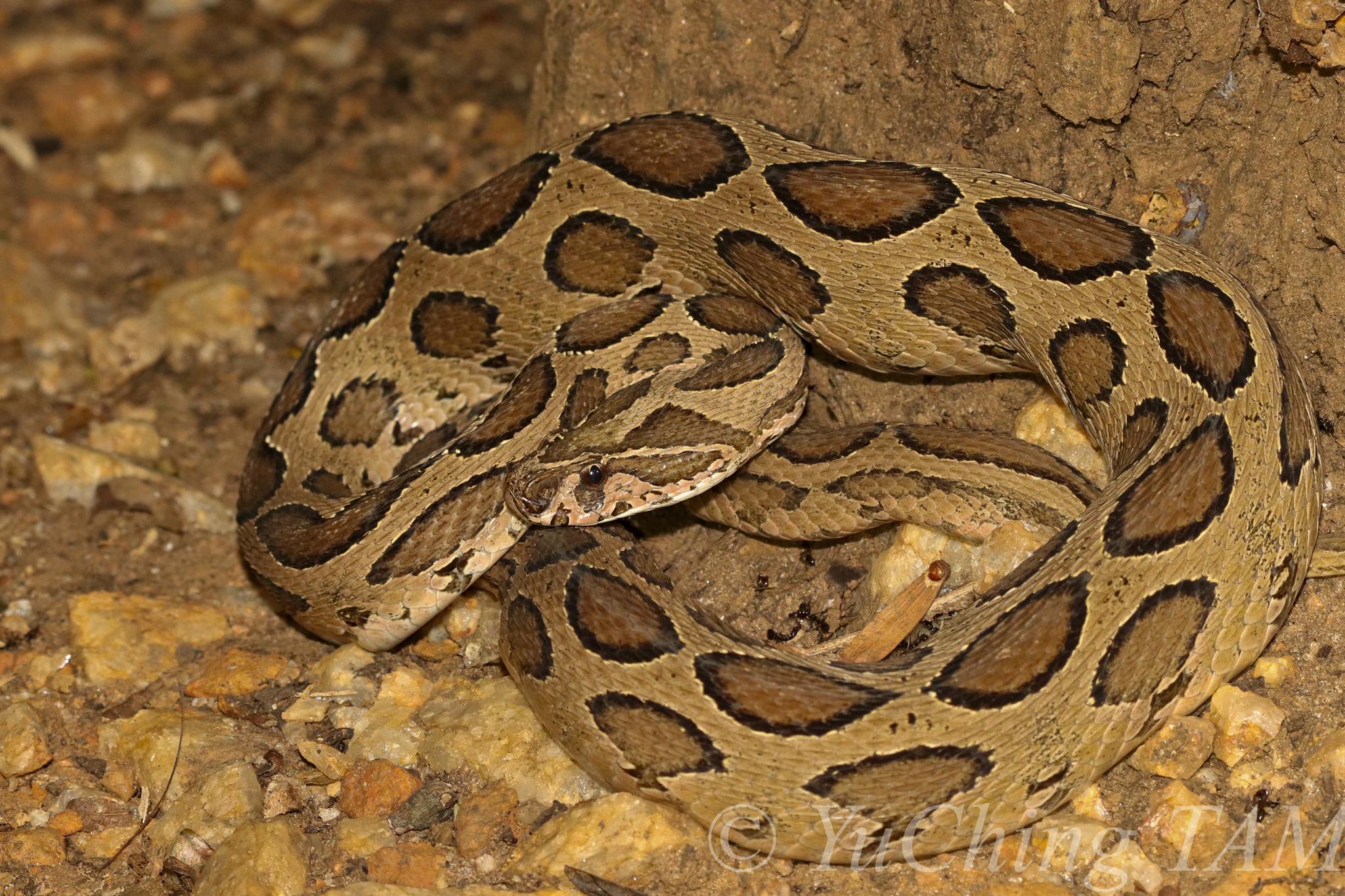
Russell’s viper (Daboia russelii) is a venomous snake species that belongs to the family Viperidae. It is native to the Indian subcontinent and is one of the big four snakes in India, responsible for causing the most snakebite incidents and deaths among all venomous snakes.
The species was described in 1797 by George Shaw and Frederick Polydore Nodder, and named after Patrick Russell, who wrote about it in his 1796 work “An account of Indian serpents, collected on the coast of Coromandel”. Russell’s vipers have a rounded, thickset body with strongly keeled dorsal scales and a short tail. They measure 4 to 5.5 feet long on average, but some specimens can reach up to 7 feet.
The skin color of Russell’s vipers varies from brownish to yellowish, with a series of dark brown or black bands that run down the length of the body. The head is triangular and distinct from the neck, with two large fangs that can rotate forward to deliver venom.
Russell’s vipers are most common in plains, coastal lowlands, and hills of suitable habitat, and they are often found in highly urbanized areas and settlements in the countryside because of the abundance of rodents. They are solitary terrestrial creatures that are primarily nocturnal foragers, but during cool weather, they become more active during the day. Russell’s vipers feed on small mammals, birds, and reptiles.
Banded krait (Bungarus fasciatus)

The banded krait (Bungarus fasciatus) is a venomous elapid snake species that is native to the Indian subcontinent and Southeast Asia. It is the largest species of krait, with a maximum length of up to 2.7 m (8 ft 10 in).
The skin of the banded krait is characterized by alternate black and yellow crossbands that encircle the body, and arrowhead-like yellow markings on its otherwise black head. The eyes are black, and the head is broad and depressed, not distinct from the neck.
The banded krait is nocturnal and feeds on other snakes, lizards, and small mammals. It is considered to be a species of least concern by the IUCN Red List, although population numbers are unknown, and they appear to be in decline throughout much of their range.
The scientific name of the banded krait is Bungarus fasciatus, and there are no recognized subspecies despite its huge range.
Eastern brown snake (Pseudonaja textilis)
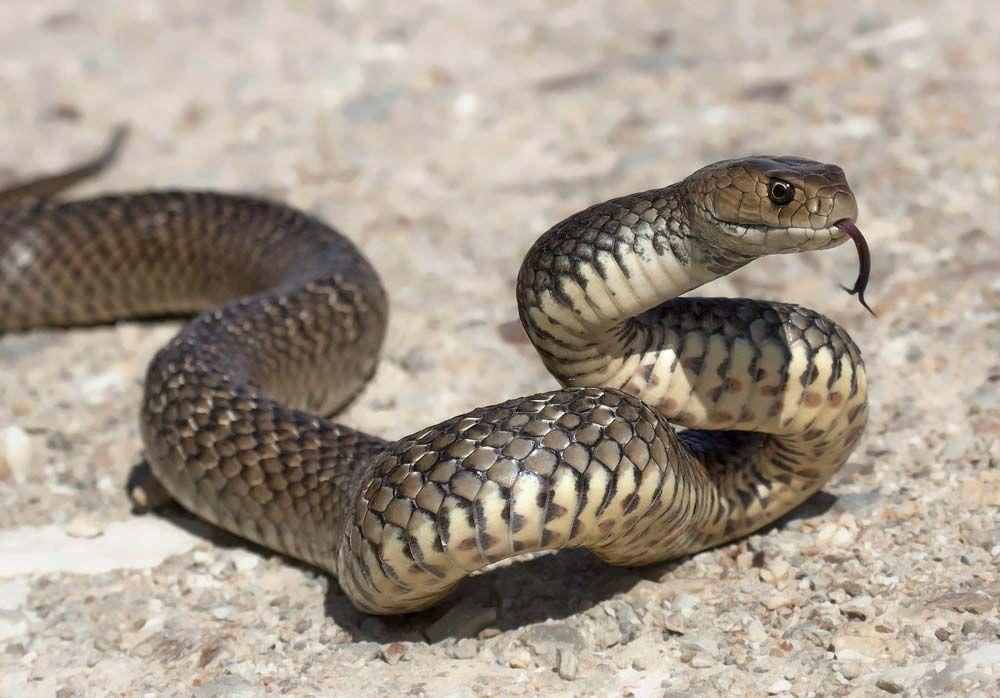
The Eastern brown snake (Pseudonaja textilis) is a highly venomous snake species that is native to eastern and central Australia and southern New Guinea.
The Eastern brown snake is often referred to as the common brown snake. The adult Eastern brown snake has a slender build and can grow up to 2 m (7 ft) in length.
The skin color of the Eastern brown snake varies from light brown to almost black, and it has a characteristic dark brown or black patch on the back of its head.
The Eastern brown snake is often confused with other members of the Pseudonaja genus that overlap its distribution, and close inspection is generally required to distinguish them.
The Eastern brown snake is highly venomous and is responsible for more deaths from snakebite in Australia than any other species. The Eastern brown snake is diurnal and feeds on small mammals, birds, and reptiles.
The Eastern brown snake is not an aggressive snake and will usually try to escape if it feels threatened, but it will defend itself if cornered or provoked.
The Eastern brown snake is found in a wide range of habitats, including forests, woodlands, grasslands, and urban areas. The Eastern brown snake is oviparous, meaning that it lays eggs.
The scientific name of the Eastern brown snake is Pseudonaja textilis, which means “false cobra woven fabric”.
Coastal taipan (Oxyuranus scutellatus)
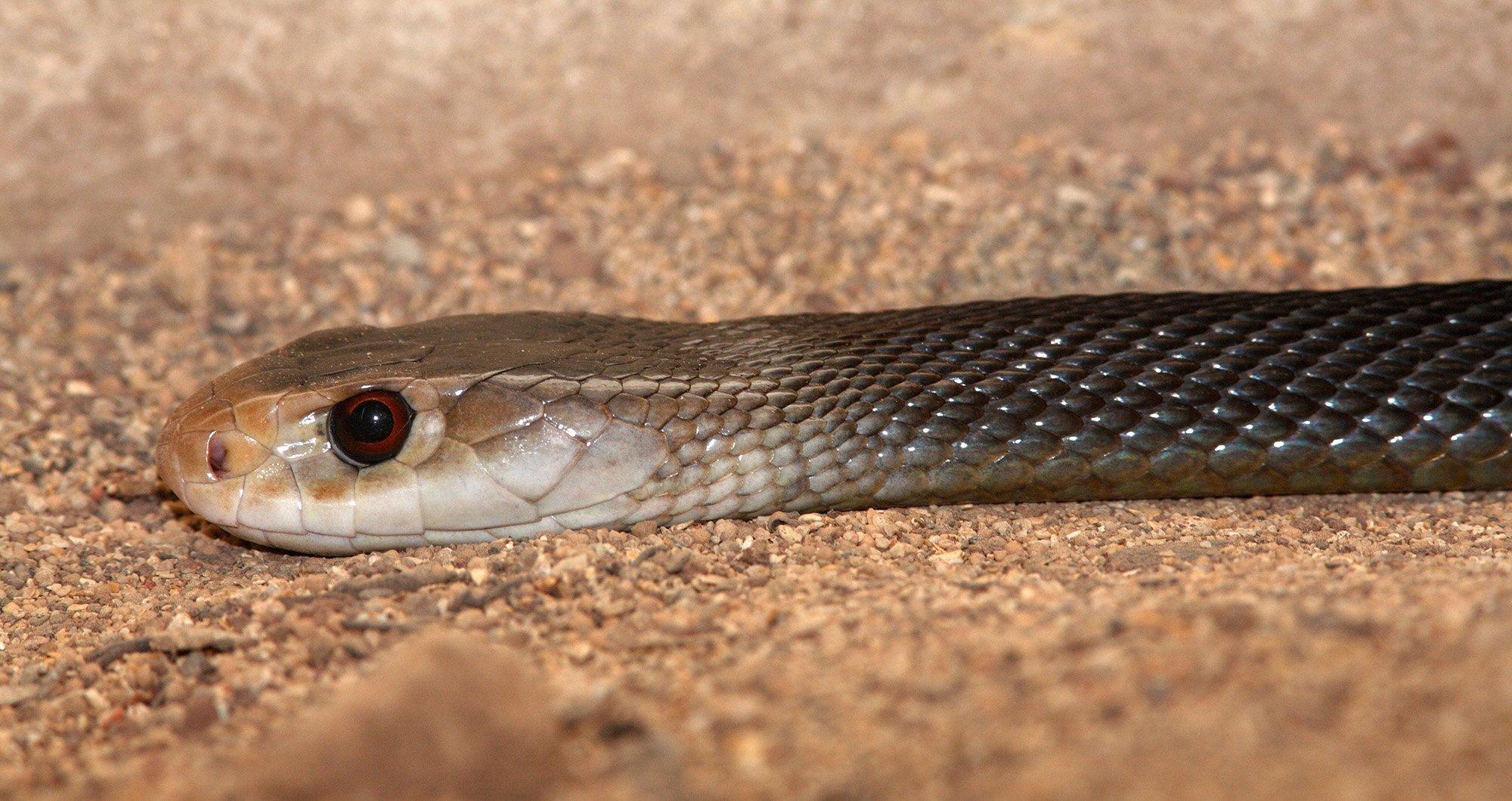
The coastal taipan (Oxyuranus scutellatus) is a highly venomous snake species that belongs to the Elapidae family. The coastal taipan is also known as the common or eastern taipan.
Despite its name, the species can be found in a variety of different habitats hundreds of kilometers away from the ocean, where the maximum winter temperature is higher than 20°C (68°F). Coastal taipans are found in temperate to tropical coastal regions, wet and dry forests and woodlands, monsoon forests, and in both natural and man-made grassy areas. They have also adapted well to Queensland’s sugarcane fields, where they thrive hunting the rodent population.
The other subspecies, the Papuan taipan (Oxyuranus scutellatus canni), is found throughout the New Guinea island, with the higher concentrations being found in the nation of Papua New Guinea.
Read more : Top 10 Biggest Animals That Ever Walked The Earth
The coastal taipan uses abandoned animal burrows, hollow logs, and piles of vegetation and litter as shelters. The coastal taipan is usually a uniform light to dark brown on the upper side, but it may be almost black in color. Their belly is creamy or yellow, with some irregular yellow or orange.
Coastal taipans are active throughout the year, but they are most commonly encountered in late winter and spring. Coastal taipans feed on mice, bandicoots, rats, and birds. The venom in their bite starts to have adverse effects on a human within 30 minutes.
The average length of a coastal taipan is around six feet, but they can grow as long as nine and a half feet. Though an adult coastal taipan is not threatened by predators, a baby is vulnerable to goannas and hawks.
The coastal taipan is considered to be a least-concern species according to the International Union for Conservation of Nature.
Tiger snake (Notechis scutatus)
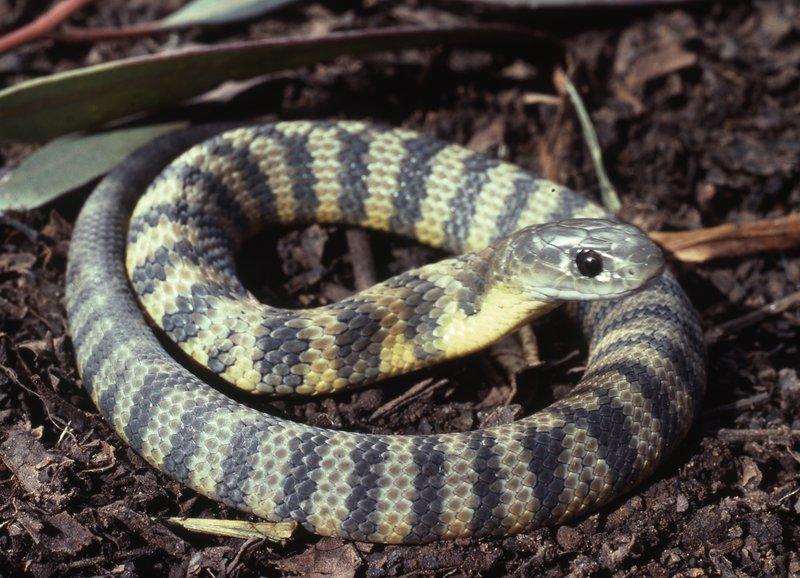
The tiger snake (Notechis scutatus) is a venomous snake species that is native to southern Australia, including its coastal islands and Tasmania. The tiger snake is one of Australia’s most notorious species of venomous snakes.
The skin color of the tiger snake varies greatly, but it is often black or brown with yellow or cream-colored bands or stripes. The tiger snake is diurnal and feeds on frogs, lizards, insects, birds, and small mammals. Contrary to perceived wisdom, tiger snakes are not aggressive, although they will bite if interfered with.
The venom of the tiger snake is highly toxic and can cause paralysis and death in humans. The tiger snake is oviparous, meaning that it lays eggs.
The Eastern tiger snake (Notechis scutatus) and the so-called Black tiger snake (Notechis ater) were once considered two separate species, but recent molecular studies have shown them to be genetically similar, hence it would seem that there is now just one wide-ranging species that varies greatly in size and coloration.
The tiger snake is found in a wide range of habitats, including forests, woodlands, grasslands, and urban areas. The tiger snake is classified within the genus Notechis (Elapidae), which is allied to the elapid family, venomous snakes with fixed front fangs.
The classification of this genus is given as a single and highly variable species, Notechis scutatus, or a second species Notechis ater, and by an arrangement of subspecies or regional morphs.
Fer-de-lance (Bothrops asper)
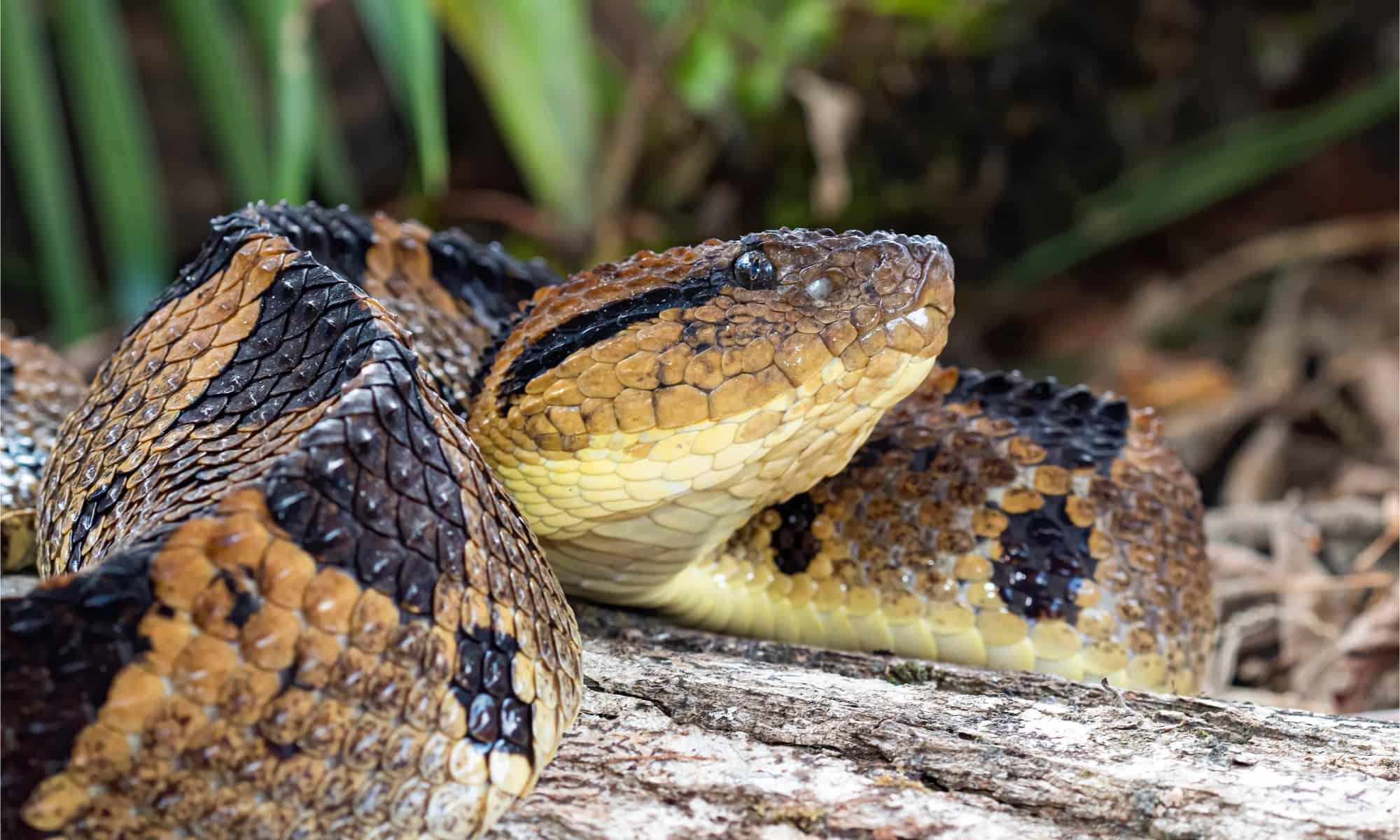
The fer-de-lance (Bothrops asper) is a highly venomous pit viper species found from southern Mexico to northern South America. The name fer-de-lance is French (or possibly Créole), translating to “iron of the lance”, “iron spear point” or simply “spearhead” or “lancehead”.
The fer-de-lance is the most dangerous snake in Central America and is responsible for more human fatalities than any other venomous snake in the region. The skin color of the fer-de-lance varies from brown to gray, with a series of dark brown or black bands that run down the length of the body. The fer-de-lance is a large and heavy-bodied snake that can grow up to 2.5 meters (8.2 ft) in length.
The fer-de-lance is oviparous, meaning that it lays eggs. The fer-de-lance is a terrestrial snake that is found in a variety of habitats, including rainforests, dry forests, and savannas. The fer-de-lance is a solitary and nocturnal hunter that feeds on small mammals, birds, and reptiles.
The venom of the fer-de-lance is highly toxic and can cause severe pain, swelling, and tissue damage, as well as systemic effects such as bleeding, kidney failure, and shock. The fer-de-lance is sometimes referred to as the “ultimate pit viper” due to the potency of its venom and its aggressive behavior when threatened.
The name fer-de-lance has been used inconsistently and very informally with several species in the genus Bothrops having been called fer-de-lance at one time or another, most commonly Bothrops asper, Bothrops atrox, Bothrops caribbaeus, and Bothrops lanceolatus.
FAQS
1. What is the most venomous snake in the world?
The inland taipan (Oxyuranus microlepidotus) is considered the most venomous snake in the world, according to various sources.
2. How do scientists measure the venom toxicity of snakes?
Scientists use a toxicology test called the median lethal dose, also known as LD50, to measure the venom toxicity of snakes. The smaller the number, the more venomous the snake.
3. What are the “big four” snakes in India?
The “big four” snakes in India are the Indian cobra (Naja naja), common krait (Bungarus caeruleus), Russell’s viper (Daboia russelii), and saw-scaled viper (Echis carinatus).
4. What are some common habitats of venomous snakes?
Venomous snakes can be found in a variety of habitats, including forests, woodlands, grasslands, and urban areas.
5. Are all venomous snakes aggressive?
No, not all venomous snakes are aggressive. Some snakes will try to escape if they feel threatened, while others will defend themselves if cornered or provoked.
6. How can I avoid getting bitten by a venomous snake?
To avoid getting bitten by a venomous snake, it’s important to be aware of your surroundings and watch where you step or place your hands. Wear protective clothing and footwear when in areas where venomous snakes are known to live. If you encounter a snake, give it plenty of space and do not attempt to handle or capture it.
7. What should I do if I get bitten by a venomous snake?
If you get bitten by a venomous snake, seek medical attention immediately. Do not try to suck out the venom or apply a tourniquet, as these methods can do more harm than good. Stay calm and still to slow the spread of venom through your body.
Source: https://petstutorial.com
Category: Animals










